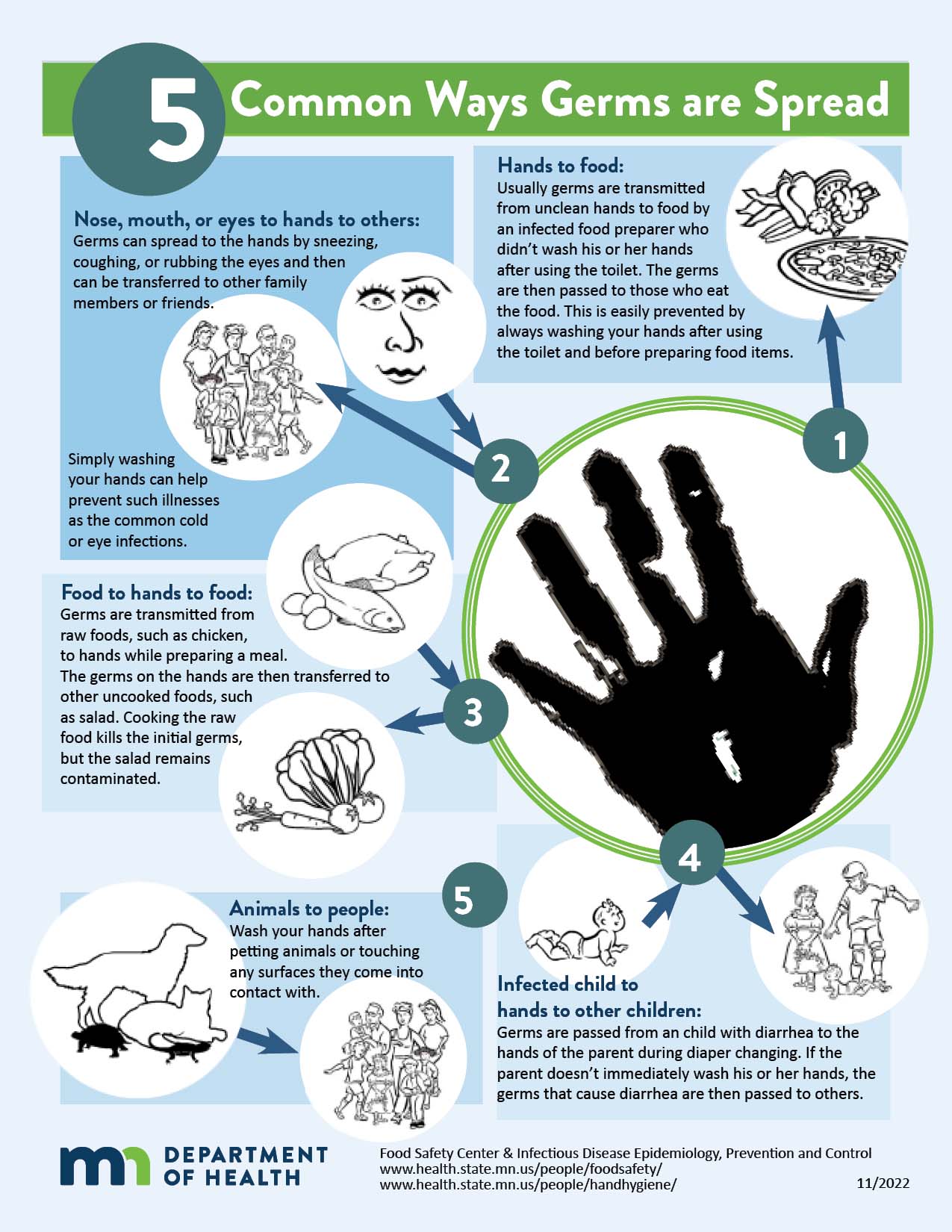When and Why: Wash Your Hands
- When and Why Home
- Diseases
- Antibiotic Resistance
- 5 Common Ways Germs are Spread
- Germs are Tough
- When Should I Wash Poster
Hand Hygiene
- Hand Hygiene Home
- Soap and Water
- Hand Sanitizer
- Why and When
- Choosing and Using Soap
- Teaching Hand Hygiene
- For Schools and Child Care
- For Food Handlers
- For Health Care Professionals
- Posters and Print Materials
Related Topics
Contact Info
Infectious Disease Epidemiology, Prevention and Control Division
651-201-5414
5 Common Ways Germs are Spread
This fun poster teaches about cross contamination.
Download a print version of this document:
5 Common Ways Germs Are Spread (Cross Contamination) Poster (PDF)
Five common ways germs are spread:
- Nose, mouth, or eyes to hands to others:
Germs can spread to the hands by sneezing, coughing, or rubbing the eyes and then can be transferred to other family members or friends. Simply washing your hands can help prevent such illnesses as the common cold or eye infections.
- Hands to food:
Usually germs are transmitted from unclean hands to food by an infected food preparer who didn’t wash his or her hands after using the toilet. The germs are then passed to those who eat the food. This is easily prevented by always washing your hands after using the toilet and before preparing food items.
- Food to hands to food:
Germs are transmitted from raw foods, such as chicken, to hands while preparing a meal. The germs on the hands are then transferred to other uncooked foods, such as salad. Cooking the raw food kills the initial germs, but the salad remains contaminated.
- Infected child to hands to other children:
Germs are passed from a child with diarrhea to the hands of the parent during diaper changing. If the parent doesn’t immediately wash his or her hands, the germs that cause diarrhea are then passed to others.
- Animals to people:
Wash your hands after petting animals or touching any surfaces they come into contact with.
Last Updated: 10/04/2022
